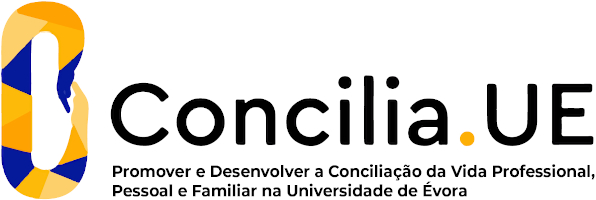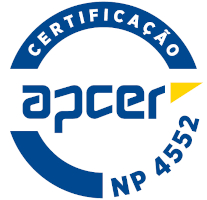2025
Mathematics I
Name: Mathematics I
Code: MAT11960L
6 ECTS
Duration: 15 weeks/156 hours
Scientific Area:
Mathematics
Teaching languages: Portuguese
Languages of tutoring support: Portuguese
Regime de Frequência: Presencial
Sustainable Development Goals
Learning Goals
The intended learning outcomes of the curricular unit are the following:
• Acquire basic background in Mathematical Analysis.
• Know how to formulate a problem mathematically and identify and use the strategies appropriate to its analytical resolution.
• Demonstrate analysis, calculation and deductive reasoning skills.
• To develop the abstract reasoning.
• Master the main concepts and tools of differential and integral calculus in IR and know how to apply them in the different contexts of the curricular units of the specialty that this curricular unit serves.
The skills and competences developed in the curricular unit are the following:
• Ability to understand and use the mathematical language.
• Ability to understand and solve mathematical problems.
• Construction of mathematical models.
• Abstraction skills.
• Creative intuition and critic capability.
• Spoken and written capability to solve and explain the results.
• Acquire basic background in Mathematical Analysis.
• Know how to formulate a problem mathematically and identify and use the strategies appropriate to its analytical resolution.
• Demonstrate analysis, calculation and deductive reasoning skills.
• To develop the abstract reasoning.
• Master the main concepts and tools of differential and integral calculus in IR and know how to apply them in the different contexts of the curricular units of the specialty that this curricular unit serves.
The skills and competences developed in the curricular unit are the following:
• Ability to understand and use the mathematical language.
• Ability to understand and solve mathematical problems.
• Construction of mathematical models.
• Abstraction skills.
• Creative intuition and critic capability.
• Spoken and written capability to solve and explain the results.
Contents
1. Topological concepts in IR
2. Differential calculus in IR: Derivative at a point and physical interpretation. Rules of derivation. Rolle, Lagrange and Cauchy Theorems. L'Hôpital and Cauchy Rules. Monotonicity, concavity and asymptotes.
3. Primitives: Primitives. Primitives by parts and by substitution. Primitives of rational functions.
4. Integration: Integral of Darboux and Riemann. Properties of the integral. The fundamental theorem of calculus and Barrows formula. Integration by parts and substitution.
5. Applications of integral calculus: Areas. Length of a line. Volumes and areas of solids of revolution.
6. Improper integrals: Convergence theorems. Absolute Convergence.
7. Numerical series: Geometric and Mengoli series. Nonnegative real series. Alternating series. Absolute convergence.
8. Power series: Definitions. Taylor and Mac-Laurin series.
9. ODE: Homogeneous non-homogeneous linear ODE of order n. Applications
2. Differential calculus in IR: Derivative at a point and physical interpretation. Rules of derivation. Rolle, Lagrange and Cauchy Theorems. L'Hôpital and Cauchy Rules. Monotonicity, concavity and asymptotes.
3. Primitives: Primitives. Primitives by parts and by substitution. Primitives of rational functions.
4. Integration: Integral of Darboux and Riemann. Properties of the integral. The fundamental theorem of calculus and Barrows formula. Integration by parts and substitution.
5. Applications of integral calculus: Areas. Length of a line. Volumes and areas of solids of revolution.
6. Improper integrals: Convergence theorems. Absolute Convergence.
7. Numerical series: Geometric and Mengoli series. Nonnegative real series. Alternating series. Absolute convergence.
8. Power series: Definitions. Taylor and Mac-Laurin series.
9. ODE: Homogeneous non-homogeneous linear ODE of order n. Applications
Teaching Methods
Lectures with exposition of the concepts and results, which are illustrated with examples of application.Practical classes, where exercises are solved in which the concepts and results taught in lectures are applied.
Special emphasis is given to problems that link the tools developed with the concepts studied, and exercises are available for an effective follow-up and consolidation of the knowledge.
The evaluation comprises two aspects: continuous and exam. The continuous evaluation, to be carried out during the academic period, consists of several frequencies (50%/100%), and possibly other evaluation elements to be agreed with the students (50%/0%, respectively). The assessment by exam consists of a global exam (100%), to be performed in the normal period and/or in the period of appeal.
It is required to attend at least 75% of practical classes for the continuous assessment and regular exam. Moreover, students may also be required to have a minimum percentage of attendance at lectures
Special emphasis is given to problems that link the tools developed with the concepts studied, and exercises are available for an effective follow-up and consolidation of the knowledge.
The evaluation comprises two aspects: continuous and exam. The continuous evaluation, to be carried out during the academic period, consists of several frequencies (50%/100%), and possibly other evaluation elements to be agreed with the students (50%/0%, respectively). The assessment by exam consists of a global exam (100%), to be performed in the normal period and/or in the period of appeal.
It is required to attend at least 75% of practical classes for the continuous assessment and regular exam. Moreover, students may also be required to have a minimum percentage of attendance at lectures
Teaching Staff
- Sandra Maria Santos Vinagre [responsible]





















